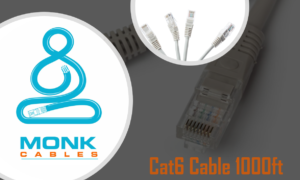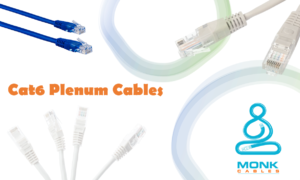Ethernet cables have become an integral part of any network. You can use them to connect two or more devices. You can also use them for your local area networks. Since there are many types of Ethernet cable out there, getting the right one can be a bit overwhelming experience.
In this article, we’ll talk about all the Ethernet categories and how are they different from each other in terms of speed and connectivity.
Fundamentals of Ethernet Cables
Nearly every Ethernet cable has the same internal structure. There are eight copper wires that are twisted together to create four pairs. In some cable, these pairs are tightly twisted to reduce crosstalk and electromagnetic interference.
Cable length is another important factor you should consider when buying cable for your networking needs. There are various cable length can you purchase. These are called patch cables. Some cables work better over shorter distances and some work better for longer distances. You need to factor in the distance before buying any cable.
You also need to consider shielded and unshielded cable especially if you are buying for an enterprise level network. Shielded cables have an extra layer of protection around the twisted pairs. This insulation keeps the crosstalk to a minimal level. There is no insulation in unshielded cable. You can use this cable for shorter run like between your router and your computer.
Various Ethernet Cable Categories
There are several categories when it comes to Ethernet cable. The TIA/EIA have established these categories to differentiate these cables. You may have notice the word cat written on a cable. The cat is shorter for category. The higher the number written next to the category, the better the cable.
We’ll talk about cat5 or higher categories in this article because the older categories have become obsolete.
Cat5e – this cable has been recognized by the TIA/EIA. You can use this cable for Ethernet and fast Ethernet applications. In addition to that, this cable offers 1Gbps data transfer rate in an ideal condition.
Cat6 – this is one the most commonly used cable all around the globe. Cat6 Plenum has an enhanced design when it comes to fight off crosstalk and EMI. In addition to that, this cable has more than 2 twists per centimeter. You can use this cable to get 10Gbps data transfer rate at 55 meters.
Cat6a – consider this cable a better version of its predecessor cat6. This cable can do everything cat6 can and more. You will get better speed and superior connectivity. This cable also has a thick sheathing and outer jacket to make it better against all sorts of crosstalk.
CCA vs Cat6 Pure Copper Cable
You can divide Ethernet cables further into two categories based on their internal conductor; CCA & pure copper cables. Some manufacturers use copper clad aluminum to make the conductor. This can affect the connectivity and data transfer rate of any cable. You should check for it before buying a cable.
Most of the Ethernet cables have pure copper conductor inside them. This will give you better performance and greater connectivity. The pure copper cables are a bit expensive as compare to the CCA. At the same time, you will get improved performance with pure copper cables. We would encourage you to do a little bit of research before buying a cable for your network. This will help you get the right cable at reasonable price.
The Best Ethernet Cable?
Selecting the right cable for your network will have a great impact on your network’s speed and connectivity. Since there are a lot of options out there to choose from, getting the right cable can become a hassle.
You may have notice the word “cat” written on the cable when out shopping for cable. The “cat” is the short for category. There is also a number right next to cat. The general rule of thumb dictates that the higher the number, the better the cable. It means that a White Cat6 Solid copper cable would be better than cat4.
You should remember that Ethernet cables have lower transmission over longer distances. That is why there are two speed rating in particular. The cable speed will be different at 10 to 30 meters and it will be entirely different at 55 to 100 meters.
You should keep in mind all these factors when getting a cable for your network. Remember, a thorough research about your network will give you the best chance to get the right cable.















































